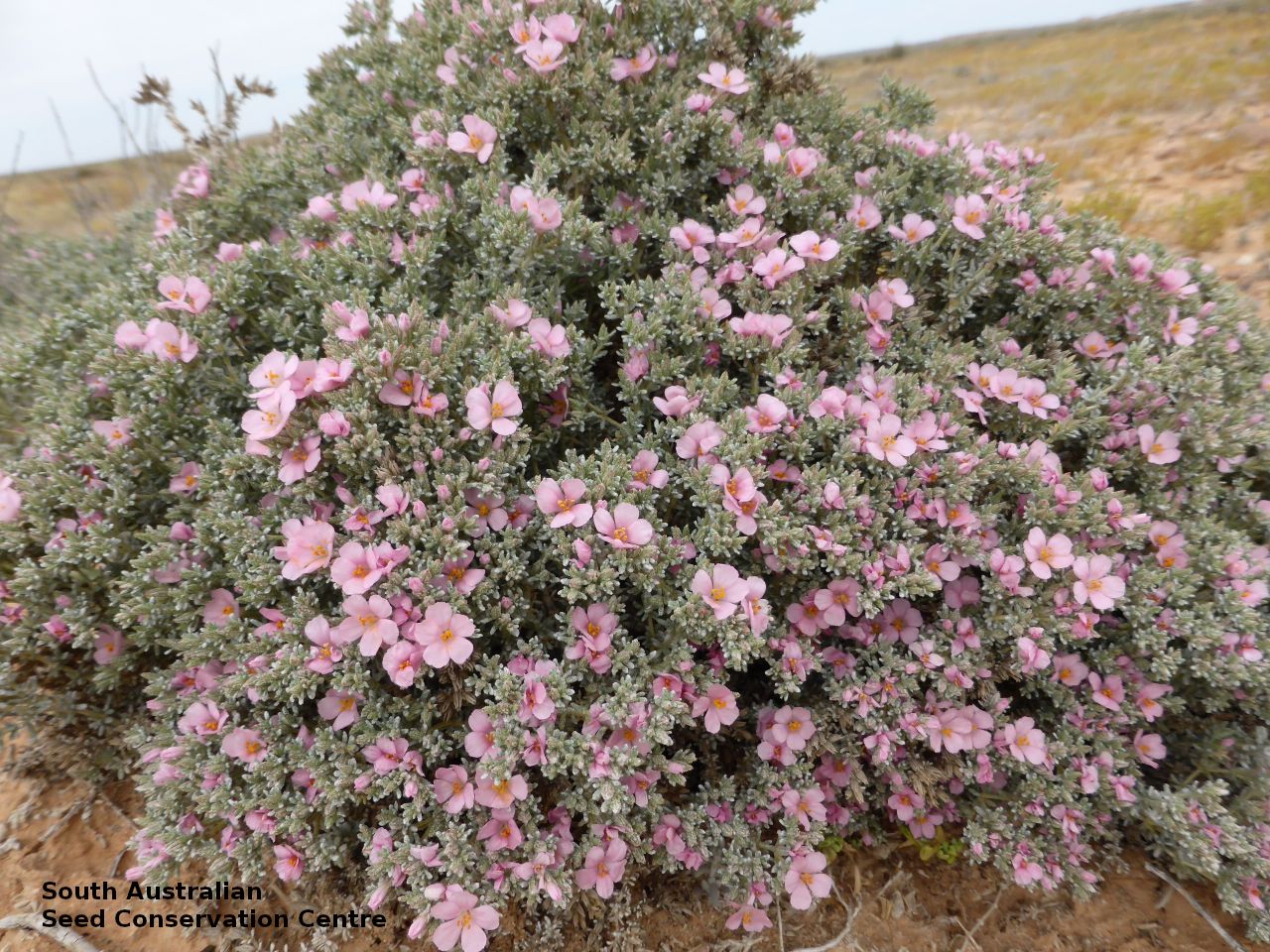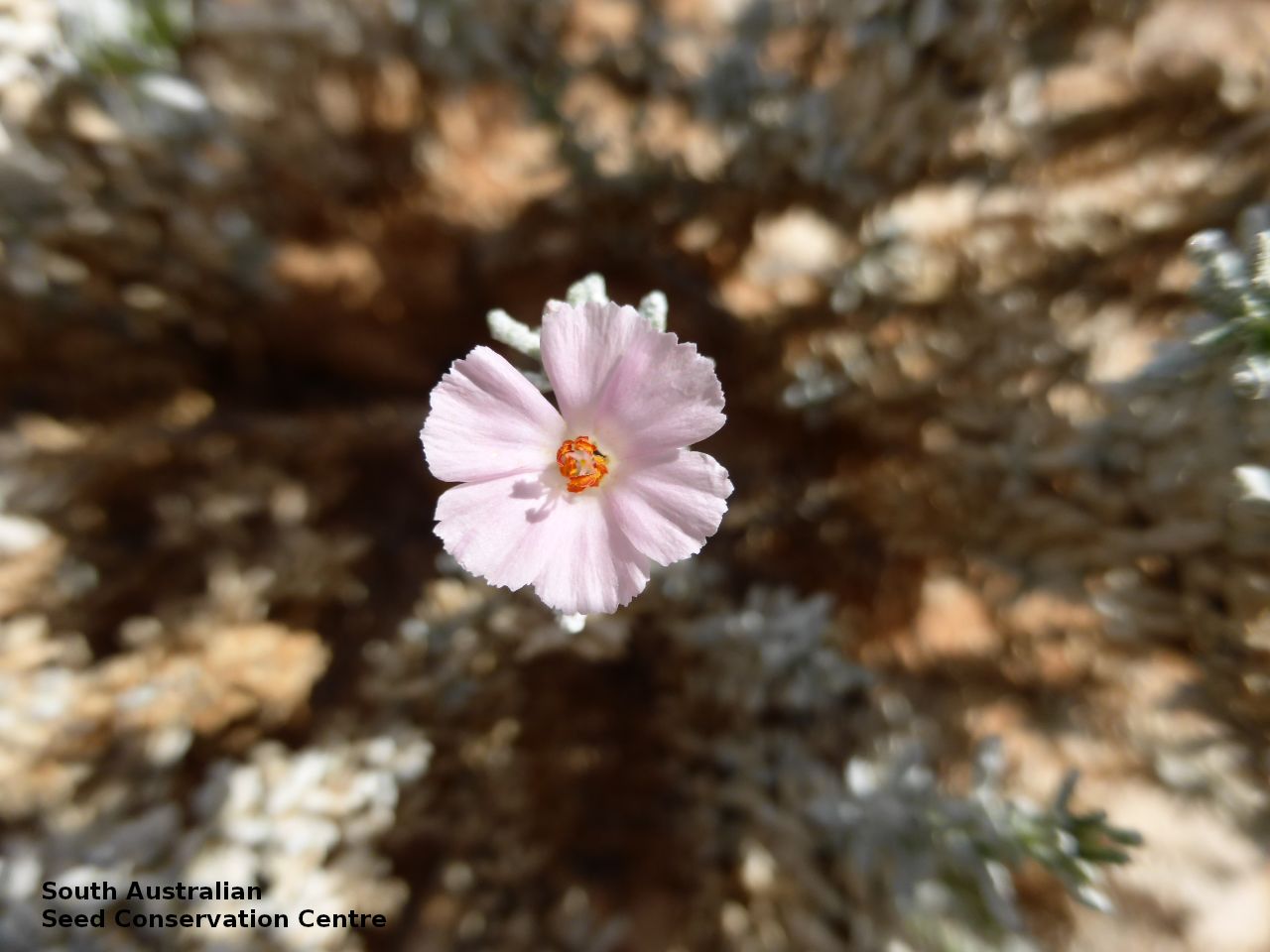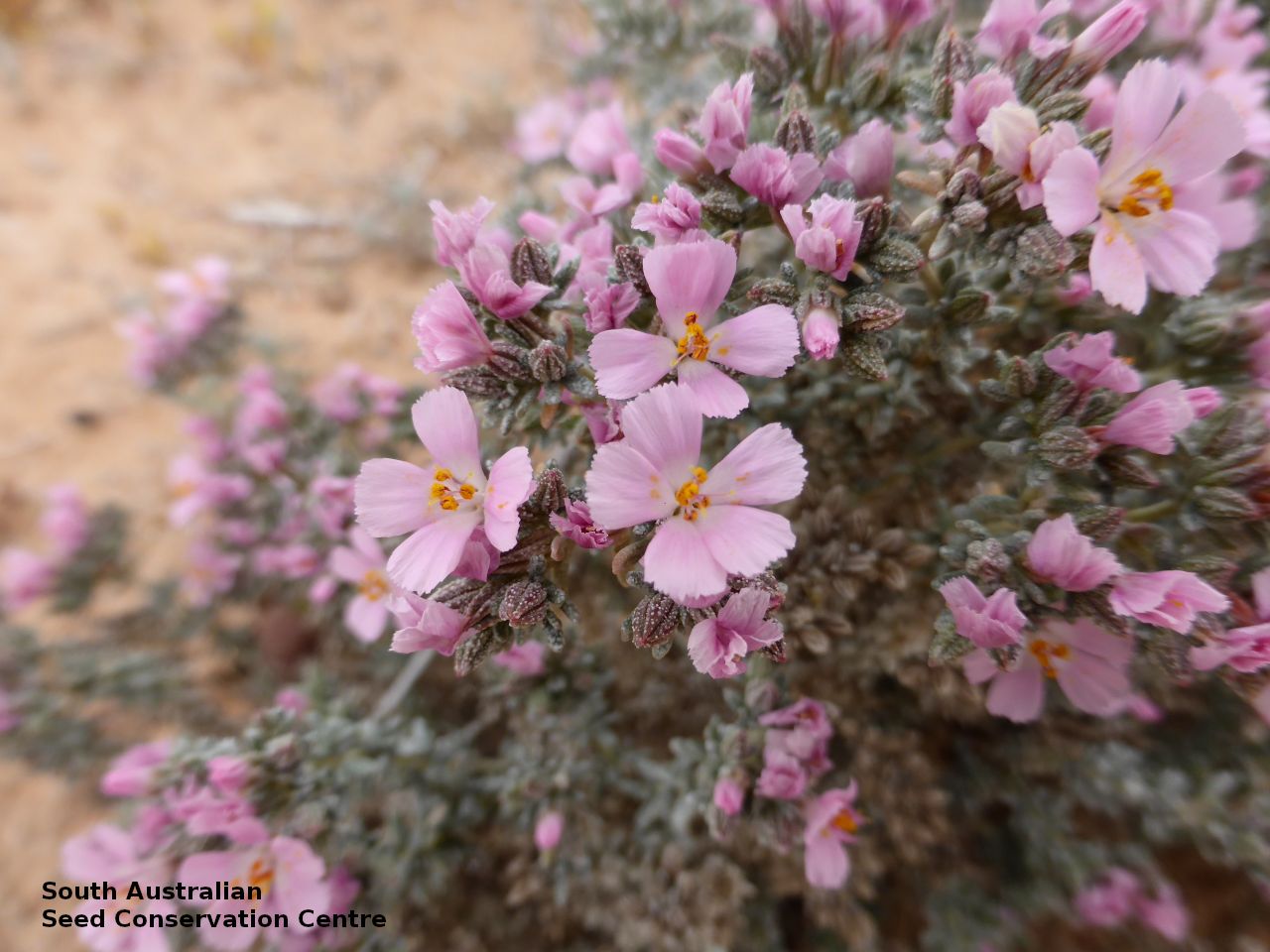








Botanical art
Etymology
Frankenia named after Johan Frankenius (1590-1661), a Swedish botanist. Plicata from the Latin 'plicare' meaning folded in plaits or braided.
Distribution and status
Endemic to South Australia and found in the north-east growing in swales and hillside channels on loamy sands to clay. Native. Rare in South Australia.
Herbarium regions: Lake Eyre, Gairdner-Torrens
NRM region: South Australian Arid Lands
AVH map: SA distribution map (external link)
Plant description
A small, densely branched, hairy, erect or prostrate shrub with 25 cm long stems. Branches are differentiated into long and short-shoots. The grey-green linear leaves are stalked, to 6 cm long, usually hairless, and dotted by glands above or sometimes covered with stiff short hairs. The margins are tightly in-rolled and hide the midrib below. Flowers occur on 1–4 nodes of the upper branches, are commonly solitary or in groups of 2–3. Flowering between September and October. Fruits are brown cylindrical capsule. Seeds are no information Seed embryo type is spatulate, fully developed.
Seed collection and propagation
Collect seeds between October and December. Look at the tip of branches for dried flower heads. Collect the heads that are cylindrical, brown, slightly fat at the base. This should contain small ovoid seed. Place the flower heads in a tray and leave to dry for at least a week. Then rub the dried heads gently to dislodge the seeds. Use a fine sieve to separate the seeds from the unwanted material. Be careful as the seeds are very small. Store the seeds with a desiccant such as dried silica beads or dry rice, in an air tight container in a cool and dry place. Seed set can be low but viability is high. From one collection, the seed viability was high, at 100%. Seeds are non-dormant, viable seed should germinate readily.